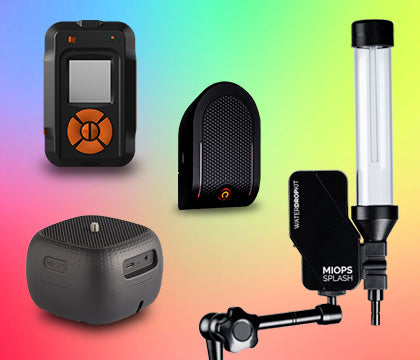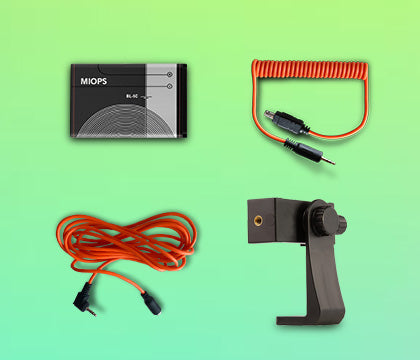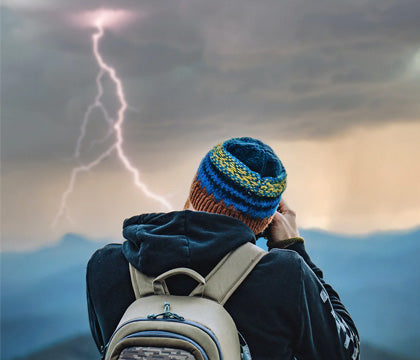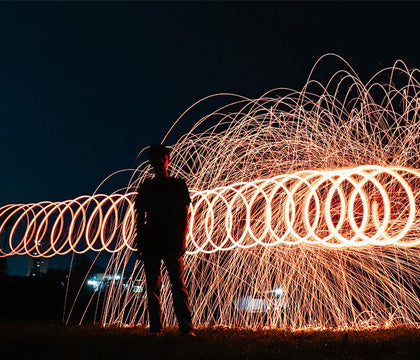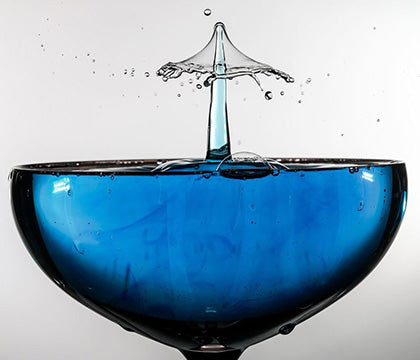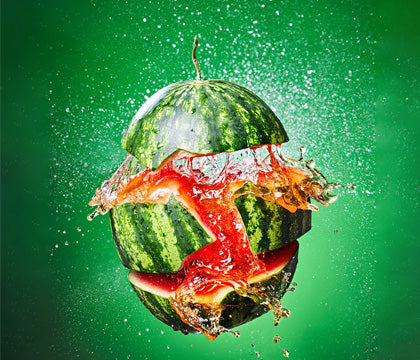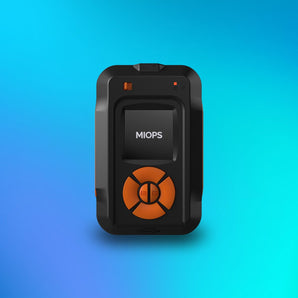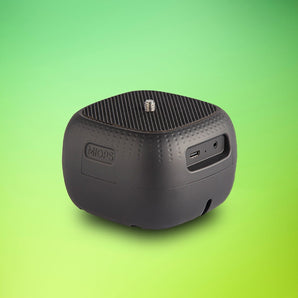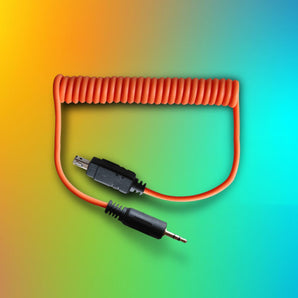Cloud timelapse photography compresses hours of sky motion into captivating sequences, revealing textures, patterns, and dynamics invisible to the naked eye. From fluffy cumulus drifting over sunlit landscapes to dramatic storm clouds rolling across urban skylines, cloud timelapses create cinematic storytelling opportunities. This guide provides detailed techniques for both still and motion timelapse, highlighting the MIOPS Smart+ for precision triggering and the Capsule Pro for dynamic motion timelapse sequences.
Why Cloud Timelapses Are Captivating
Clouds are constantly shifting in light, shape, and density. Timelapse sequences make these changes visually engaging and can transform ordinary landscapes into dramatic visual narratives. Unlike still landscapes, moving clouds add an organic sense of motion and life to your compositions, making them perfect for cinematic videos, stock footage, or personal creative projects.
Common Challenges in Cloud Timelapse Photography
- Exposure Variations: Changes in sunlight, shadows, or haze can create inconsistent frames.
- Interval Selection: Too short intervals make motion appear jumpy; too long intervals may smooth out dramatic cloud movement.
- Camera Shake: Even minimal wind can cause blur in long sequences.
- Post-Processing Flicker: Slight exposure shifts between frames result in distracting flicker.
Step 1: Planning Your Cloud Timelapse
Preparation ensures smoother workflow and higher-quality results:
- Check weather forecasts for dynamic cloud activity.
- Scout locations with interesting foreground elements such as mountains, trees, lakes, or urban skylines.
- Consider the sun’s path — golden hour adds warm tones, while midday may require careful exposure management.
- Decide whether you will create a still timelapse (static camera) using MIOPS Smart+ or a motion timelapse (moving camera) using Capsule Pro.
Step 2: Choosing Interval Settings
Interval selection determines the smoothness and pace of motion:
- Slow-moving clouds: 10–20 seconds per frame.
- Fast storm clouds: 2–5 seconds per frame.
- Night clouds or starry skies: 20–30 seconds per frame, with longer exposures if using a higher ISO.
MIOPS Smart+ allows precise interval triggering for still timelapses, ensuring each frame is captured consistently without human error. For motion timelapses, Capsule Pro provides smooth panning and tilting over the scene, creating dynamic cinematic motion.
Step 3: Camera Settings and Exposure
Clouds move rapidly and change lighting constantly. Optimizing settings ensures clarity and visual impact:
- Aperture: f/8–f/16 for sharp landscapes and consistent depth of field.
- ISO: Keep it low (100–400) to reduce noise.
- Shutter Speed: Adjust for desired motion blur; faster speeds for sharp detail, slower speeds for ethereal streaking clouds.
- White Balance: Set manually to maintain consistent color across the sequence.
- Focus: Use manual focus to avoid focus hunting between frames.
Step 4: Stabilization and Framing
Stability is key for smooth timelapses:
- Use a sturdy tripod on level ground.
- Lock your camera settings and avoid zooming or adjusting during capture.
- Frame your shot with a visually interesting foreground for depth and context.
- For motion timelapse, Capsule Pro ensures precise camera movement without vibration or inconsistencies.
- Use MIOPS Smart+ remote triggering to eliminate hand-induced vibrations.
Step 5: Shooting Techniques for Dramatic Cloud Motion
Enhance the impact of your cloud timelapses with these techniques:
- Golden Hour Clouds: Capture soft, warm sunlight filtering through clouds.
- Storm Clouds: Use faster intervals to capture the energy of approaching storms.
- Layered Sky: Include both low and high clouds to create depth and texture.
- Night Sky Clouds: Combine cloud movement with stars using long exposures.
- Creative Triggers: MIOPS Smart+ can trigger sequences based on light, sound, or laser events for capturing rare moments like lightning or sudden weather changes.
Step 6: Post-Processing Workflow
Even perfectly shot sequences benefit from careful post-processing. Using Lightroom and Premiere Pro, you can create cinematic timelapses:
Lightroom Editing
- Import images and review for outliers or blurry frames.
- Adjust exposure, contrast, highlights, and shadows for consistency.
- Apply color grading for a cinematic mood.
- Batch-edit settings and synchronize across all frames.
- Use LRTimelapse or manual keyframing to deflicker sequences, especially useful for cloud transitions.
- Noise reduction is critical for night or low-light clouds.
Premiere Pro Assembly
- Import images as an image sequence.
- Set frame rate (24–30 fps for cinematic feel).
- Apply Warp Stabilizer if necessary, particularly for handheld sequences.
- Add color grading layers to enhance cloud textures and contrasts.
- Layer soundtracks (ambient wind, storm sounds, or cinematic music) to elevate the visual impact.
- For motion timelapse, use Capsule Pro’s recorded movement data to align sequences perfectly in Premiere.
Creative Cloud Timelapse Effects
- Time Remapping: Speed up or slow down sequences to emphasize dynamic cloud movement.
- Foreground-Background Contrast: Include stationary objects for perspective and scale.
- Day-to-Night Transitions: Blend multiple sequences for smooth lighting changes.
- Storm-to-Clear Skies: Capture dramatic weather transformations.
- Star Trails and Clouds: Combine long-exposure night clouds with star trails for a cinematic nightscape.
- MIOPS Smart+: Use advanced triggers to capture precise cloud events like lightning or sudden gusts of wind.
- Capsule Pro Motion: Pan, tilt, or rotate the camera during timelapse for smooth, dynamic storytelling.
Step 7: Exporting Your Cloud Timelapse
Export sequences at high quality for maximum visual impact:
- 4K or 1080p resolution depending on use.
- H.264 codec for online sharing, ProRes for professional production.
- Add audio tracks to match the speed and mood of clouds.
- Double-check frame alignment, stabilization, and color consistency before final delivery.
- Consider exporting both still and motion timelapses for creative variety.
Tips for Stunning Cloud Timelapse Photography
- Plan for weather and light conditions in advance.
- Use consistent intervals and camera settings to minimize flicker.
- Combine still and motion timelapses to add cinematic depth.
- Utilize MIOPS Smart+ for precision triggering and automation.
- Integrate Capsule Pro for smooth, cinematic motion timelapse shots.
- Post-process carefully to enhance colors, contrast, and overall visual appeal.
- Experiment with shutter speed to create natural motion blur or crisp cloud patterns.
Conclusion
Cloud timelapse photography is both an art and a technical challenge. By combining careful planning, precise interval settings, and optimized exposure, you can capture dramatic sky sequences that stand out. Post-processing in Lightroom and Premiere Pro transforms raw frames into cinematic works of art, while MIOPS Smart+ ensures consistent, flicker-free captures for still timelapses. For dynamic motion timelapses, Capsule Pro adds smooth, precise camera movements, making your sequences even more engaging. With practice, patience, and attention to detail, you can turn cloud motion into breathtaking visual stories that captivate audiences.
Keywords: cloud timelapse photography, dynamic skies, timelapse photography tips, MIOPS Smart+, Capsule Pro, motion timelapse, still timelapse, interval settings, cloud motion, time-lapse video editing


